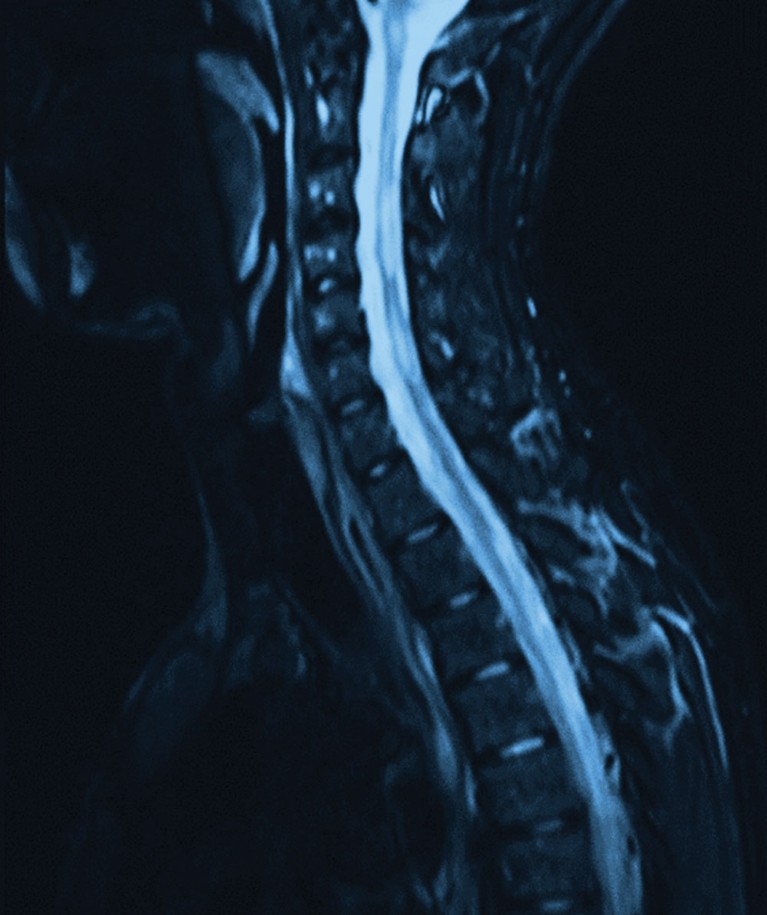
Spinal patchy white matter, visible in an MRI scan, led to a misdiagnosis of MS several years earlier.@2016 KAIMRC
Researchers in Saudi Arabia have identified a previously unknown mutation causing a condition that had been mistaken for multiple sclerosis (MS). The discovery emphasizes the risk of genetic diseases being misdiagnosed as MS.
“Our work demonstrates that neurologists must be made aware of the red flags that might suggest a diagnosis of MS is less likely,” says KAIMRC’s Hussein Algahtani, who led the research.
Algahtani examined two brothers with a long-standing diagnosis of MS and found atypical clinical and radiological abnormalities, ‘red flags’ that suggested possible misdiagnosis. Spinal abnormalities found in MRI scans known as ‘patchy white matter’ had, ten years earlier, contributed to an MS diagnosis, but the KAIMRC researchers and colleagues elsewhere in Saudi Arabia suspected a different cause. The team had previously identified several genetic conditions mimicking many of the symptoms of MS. “That these two new patients were from the same family led us to investigate the possibility of a genetic disorder, rather than MS,” says Algahtani.
DNA analysis of blood from the patients and their parents revealed that the patients carried a mutation in a gene known to be involved in maintaining normal nerve transmission. This ‘recessive’ mutation must be inherited from both parents to do its damage by causing a form of cerebellar ataxia: a locomotion disorder originating in the brain’s cerebellum.
Algahtani cautions that the possibility of a chance association between the mutation and the brothers’ condition cannot yet be completely ruled out, but the indications are very strong. “We are planning to conduct further genetic studies in other patients,” he says.
He points out that the high incidence in the kingdom of marriages between relatives, including first cousins, makes Saudi Arabia an ideal place to search for such genetic conditions. Genetic diseases account for a large proportion of conditions seen in Algahtani’s neurology clinic.
For the two brothers, the research means an end to years of treatment for the wrong disease, and the opportunity for more appropriate care. This study should help contribute to wider awareness of the possibility of misdiagnosing MS.


